Potrebujeme váš súhlas na využitie jednotlivých dát, aby sa vám okrem iného mohli ukazovať informácie týkajúce sa vašich záujmov. Súhlas udelíte kliknutím na tlačidlo „OK“.
ASTM D6562-12
Standard Test Method for Determination of Gaseous Hexamethylene Diisocyanate (HDI) in Air with 9-(N-methylaminomethyl) Anthracene Method (MAMA) in the Workplace
Automaticky preložený názov:
Štandardná skúšobná metóda pre stanovenie plynných hexamethylendiizokyanátu (HDI), vo vzduchu s 9- (N-methylaminomethyl) antracénového Method (MAMA) na pracovisku
NORMA vydaná dňa 1.4.2012
Informácie o norme:
Označenie normy: ASTM D6562-12
Poznámka: NEPLATNÁ
Dátum vydania normy: 1.4.2012
Kód tovaru: NS-35647
Počet strán: 6
Približná hmotnosť: 18 g (0.04 libier)
Krajina: Americká technická norma
Kategória: Technické normy ASTM
Kategórie - podobné normy:
Anotácia textu normy ASTM D6562-12 :
Keywords:
air monitoring, dual filter sampling system, hexamethylene diisocyanate, high-performance liquid chromatography, 9-(N-methylaminomethyl) anthracene, sampling and analysis, workplace atmospheres, Gaseous environments, HDI (hexamethylene diisocyanate), Methylaminomethyl anthracene (MAMA) method, Workplace air/atmospheres, ICS Number Code 13.040.30 (Workplace atmospheres)
Doplňujúce informácie
| Significance and Use | ||||||||||||
|
HDI is mostly used in the preparation of paints. For the last ten years, the use of isocyanates and their industrial needs have been in constant growth. Diisocyanates and polyisocyanates are irritants to skin, eyes, and mucous membranes. They are recognized to cause respiratory allergic sensitization, asthmatic bronchitis, and acute respiratory intoxication (4-7). The American Conference of Governmental Industrial Hygienists (ACGIH) has adopted a threshold limit value - time weighted average (TLV - TWA) of 0.005 ppm (V) or 0.034 mg/m3 (8). The Occupational Safety & Health Administration of the U.S. Department of Labor (OSHA) has not listed a permissible exposure limit (PEL) for HDI (9). Due to its low LOD and low required volume (15 L), this test method is well suited for monitoring of respiratory and other problems related to diisocyanates and polyisocyanates. Its short sampling times are compatible with the duration of many industrial processes, and its low detection limit with the concentrations often found in the working area. |
||||||||||||
| 1. Scope | ||||||||||||
|
1.1 This test method covers the determination of gaseous hexamethylene diisocyanate (HDI) in air samples collected from workplace and ambient atmospheres. The method described in this test method collects separate fractions. One fraction will be dominated by vapor, and the other fraction will be dominated by aerosol. It is not known at the present time whether this represents a perfect separation of vapor and aerosol, and in any case, there are not separate exposure standards for vapor and aerosol. Therefore, in comparing the results for isocyanate against a standard, results from the two fractions should be combined to give a single total value. The reason for splitting the sample into two fractions is to increase analytic sensitivity for the vapor fraction and also to give the hygienist or ventilation engineer some information concerning the likely state of the isocyanate species. The analyses of the two fractions are different, and are provided in separate, linked, standards to avoid confusion. This test method is principally used to determine short term exposure (15 min) of HDI in workplace environments for personal monitoring or in ambient air. The analysis of the aerosol fraction is performed separately, as described in Test Method D6561. 1.2 Differential air sampling is performed with a segregating device. The vapor fraction is collected on a glass fiber filter (GFF) impregnated with 9-(N-methylaminomethyl) anthracene (MAMA). 1.3 The analysis of the gaseous fraction is performed with a high performance liquid chromatograph (HPLC) equipped with ultraviolet (UV) and fluorescence detectors. 1.4 The range of application of this test method, using UV and fluorescence detectors both connected in serial, has been validated from 0.006 to 1.12 μg of monomeric HDI/2.0 mL of desorption solution, which corresponds to concentrations equivalent to 0.0004 to 0.075 mg/m3 of HDI based on a 15-L air sample. Those concentrations correspond to a range of vapor phase concentrations from 0.06 ppb(V) to 11 ppb(V) and cover the established threshold limit value (TLV) value of 5 ppb(V). 1.5 The quantification limit for the monomeric HDI, using the UV detection, has been established as 0.012 μg/2 mL of desorption solution and as 0.008 μg/2 mL, using the fluorescence detector. These limits correspond to 0.0008 mg/m3 and 0.0005 mg/m3 respectively for an air sampled volume of 15 L. These values are equal to ten times the standard deviation (SD) obtained from ten measurements carried out on a standard solution in contact with the GFF, whose concentration of 0.02 μg/2 mL is close to the expected detection limit. 1.6 This standard does not purport to address all of the safety concerns, if any, associated with its use. It is the responsibility of the user of this standard to establish appropriate safety and health practices and determine the applicability of regulatory limitations prior to use. See Section 9 for additional hazards. |
||||||||||||
| 2. Referenced Documents | ||||||||||||
|
Podobné normy:
Historická
1.4.2013
Historická
15.10.2012
Historická
1.10.2011
Historická
1.4.2014
Historická
1.6.2012
Historická
15.1.2014



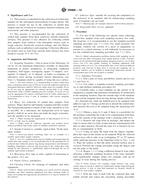 ASTM D6966-13
ASTM D6966-13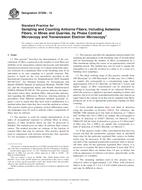 ASTM D7200-12
ASTM D7200-12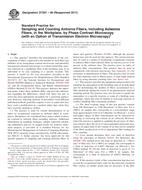 ASTM D7201-06(2011)..
ASTM D7201-06(2011)..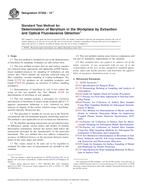 ASTM D7202-14e1
ASTM D7202-14e1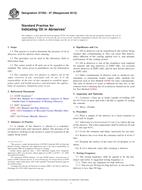 ASTM D7393-07(2012)..
ASTM D7393-07(2012)..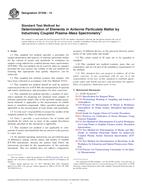 ASTM D7439-14
ASTM D7439-14
 Cookies
Cookies
